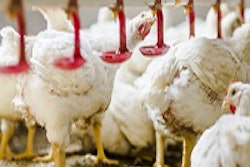
One of the biggest concerns today is how to feed an increasing population without compromising the environment, nor the future for next generations. This represents a big dilemma as, on one hand, the Food & Agriculture Organization (FAO) reports that 372 million preschool-aged children worldwide and 1.2 billion women of child-bearing age suffer from the lack of at least one of three micronutrients: iron (Fe), vitamin A or zinc (Zn). These trace mineral deficiencies are very frequent in low- to medium-income countries, which can be related to low consumption of animal products.
On the other hand, there is a pressure to reduce the meat consumption. The EAT-Lancet Commission brought together agricultural, food system, and medical researchers to review available evidence and develop dietary guidelines for a diet that was “good for the planet and good for us” called ‘The Planetary Health Diet’. This “planetary health diet” consists mostly of minimally processed, healthy plant source foods that is low in animal source foods.
A weakness of this “planetary diet” is that the recommended nutrient intakes were not based on the latest dietary reference intakes by the European Food Safety Authority (Europe) or the National Academy of Medicine (U.S. and Canada). They were calculated without accounting the bioavailability of Fe and Zn, two nutrients that are commonly insufficient among populations consuming few animal source foods, as reported by FAO. This is why the study published at Lancet suggests a planetary health diet should not necessarily be assumed to provide adequate nutrients, particularly for minerals such as Fe (especially for women of reproductive age), Zn and calcium (Ca).
Higher concentration or higher bioavailability for trace minerals?
The weakness of planetary food is to consider that the mineral composition (concentration) is assimilated by humans (bioavailable). Nevertheless, even if some legumes and oilseeds can be rich in minerals — copper (Cu), Fe, Zn — their bioavailability is lower than in animal products. Fe and Zn in red meat are bound in compounds that are more bioavailable and may be more easily digested than those in which they are bound in plant-based foods. Three different studies performed in human nutrition showed people consuming vegetarian diet ingest the same amounts of Fe, Zn and Cu than those consuming a non-vegetarian diet (Figure 1A). However, the amount of these minerals absorbed is much higher in non-vegetarian diets (for Fe and Zn; Figure 1B).

Figure 1. Contrast between the relative trace element content and the trace element bioavailability of experimental non-vegetarian (blue) and vegetarian (orange) diets. (Source: Hunt et al., 1998; 1999; 2001, cited by Hunt et al., 2003)
The differences in trace mineral bioavailability can explain why a non-vegetarian diet can provide higher amounts of absorbed trace minerals than a vegetarian diet. Among animal-based food, milk is well recognized for not only its high concentration of Ca but also due to the high Ca bioavailability, among other nutrients. Similarly, eggs have high concentrations of choline and some long-chain fatty acids, e.g. omega-3.
Can consumption of animal products provide all the necessary minerals?
The same differences observed for trace mineral bioavailability between vegetables and animal-based products can be seen in between the types of animal production system. A study from Marta’s team on the concentration of essential trace minerals in organic and conventional milk indicated that the essential trace element content of organic milk in Spain was significantly lower compared to conventional milk (Figure 2).

Figure 2. Essential trace element concentrations in organic and conventional farms (at farm level) in northwest Spain. (Adapted from Rey-Crespo et al., 2013)
This was especially evident for elements that are routinely supplemented at high concentrations in the conventional concentrate feed, mainly Cu, Zn, iodine (I) and selenium (Se); on the contrary, the higher Fe concentrations in the organic milk could be associated with the animal´s soil ingestion when grazing. These results highlight how mineral nutrition can affect the mineral composition of final animal products.
What about enriching food for human nutrition?
In the past, a lot of studies were developed to show the possibilities of enriching food. The enrichment consists of adding trace minerals to a food product. A well-known example is the enriched eggs, i.e. vitamins and Se. For Se, its content in eggs is easily manipulated when hens are fed with organic forms of Se.
One study showed that when hens are fed with Se yeast, egg Se content increased linearly as dietary levels of Se increased. In this study, each enriched Se egg had on average 30 µg Se versus 15 µg Se for a non-enriched egg, showing the improvement of 50%. Similar results were obtained in dairy cows for Se and I, when animals received seaweeds.
Authors showed a significant improvement of the mineral status of the cows, especially for I and Se. Regarding the milk composition, the seaweeds supplementation significantly improved iodine concentrations: from 136 µg/l (control) to 290 µg/l (supplemented).
While enriching food is receiving increasing attention, this technique may not be applicable for all trace minerals. For cations such as Zn, Cu, manganese (Mn), and Fe, raising their supplementation levels results in a linear increase in their accumulation in the body until reaching a plateau. At this stage of sufficient supply, homeostatic mechanisms will counter-regulate the mineral absorption from the gut lumen.
References available upon request.
Editor’s note: This is the first installment in a six-part series of articles. This article is based on Dr. Marta López Alonso’s presentation, “Animal sourced foods to fulfil mineral requirements of human populations,” made at the 5th Animine Academy, held on September 2, 2023, in Lyon, France.










